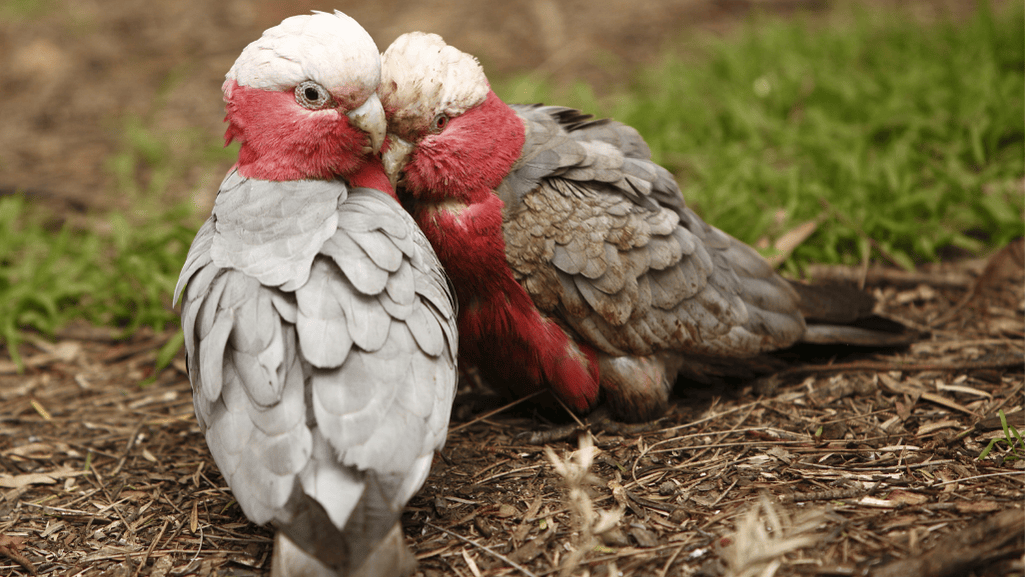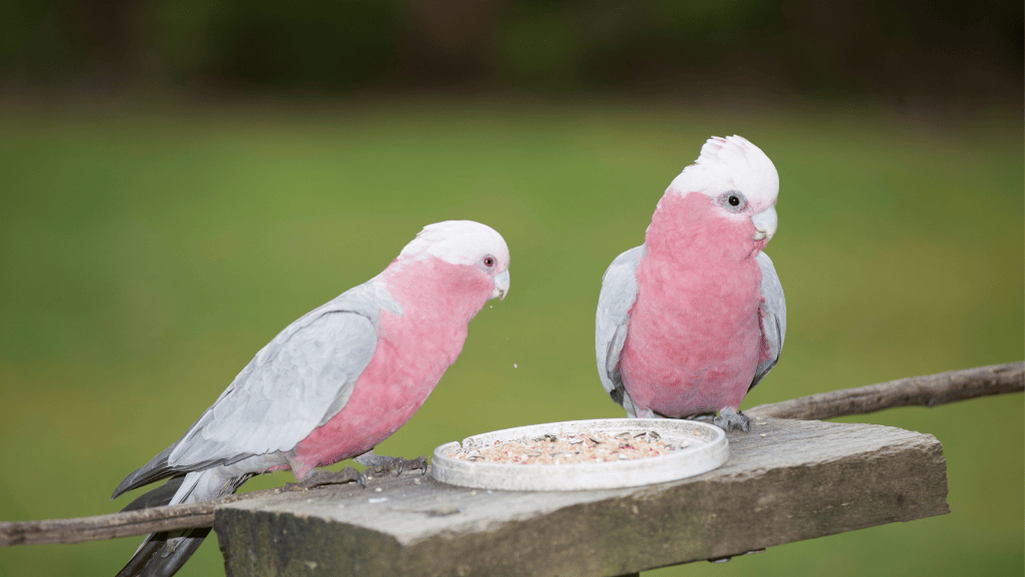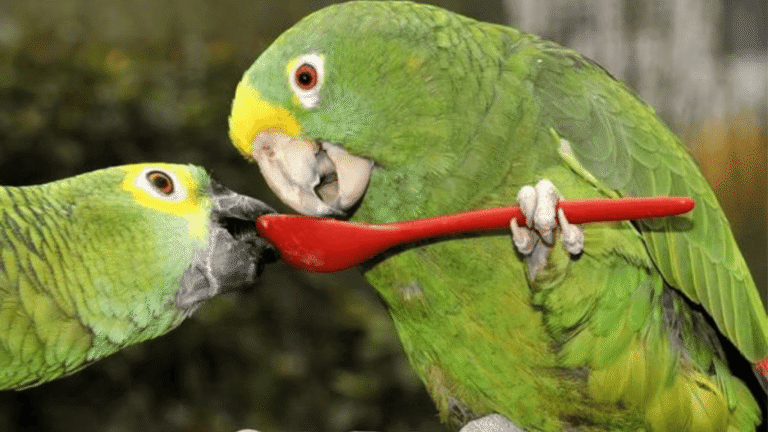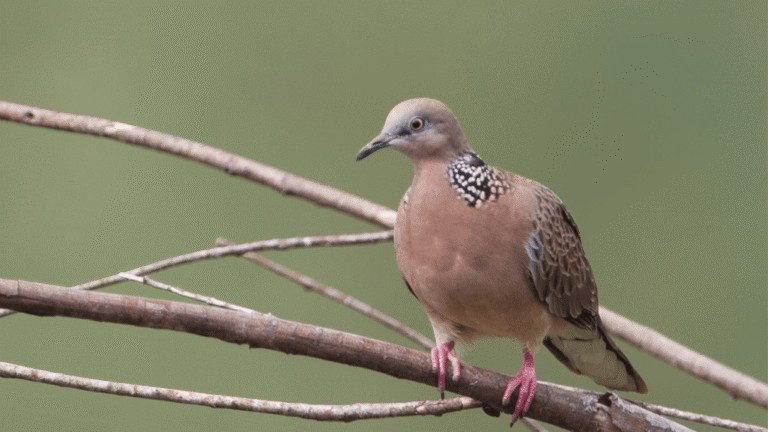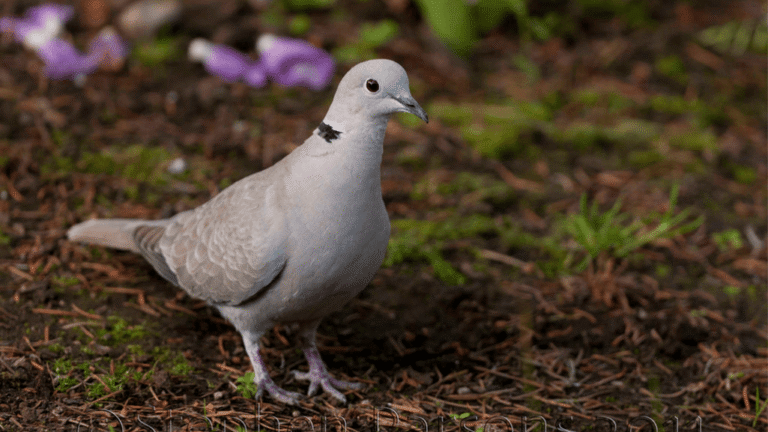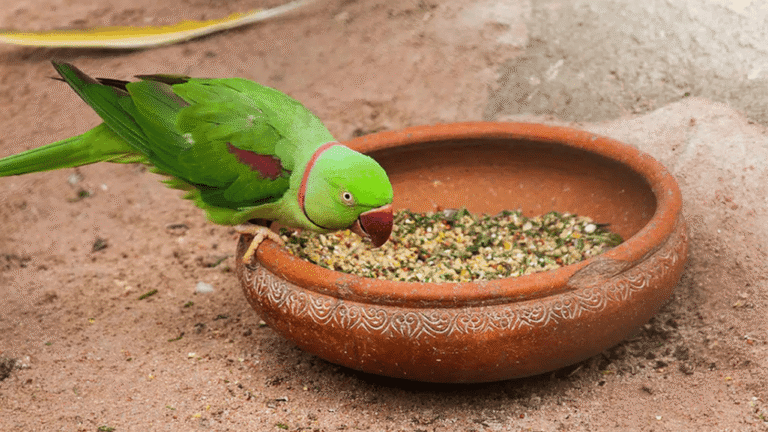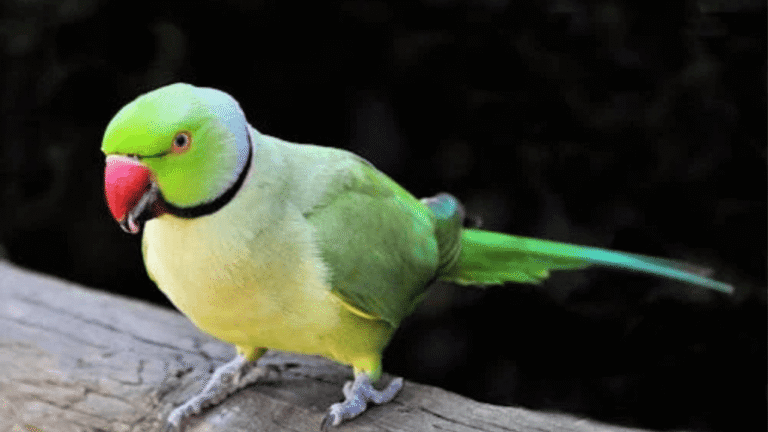Get ready for an exciting journey into the world of Galah birds, also known as rose-breasted cockatoos. These Australian parrots are famous for their bright pink feathers, fun behavior, and smart minds. We’ll explore their special traits, where they live, and why they’re important in bird care and psittaculture.
Galah birds live in Australia’s diverse landscapes. They can be found in woodlands, grassy plains, and even cities. Their ability to adapt and survive has made them a favorite among bird lovers and scientists.
Galah birds mainly eat seeds, nuts, fruits, and grains. They love eucalyptus seeds, which are a big part of their diet. Knowing what they eat helps us understand their role in nature and why we need to protect their homes.
Protecting Galah birds is key to their survival. We can help by supporting research, saving their habitats, and raising awareness. Let’s learn more about Galah birds and celebrate their beauty, smarts, and importance in Australian wildlife.
Key Takeaways:
- Galah birds are captivating Australian parrots known for their distinctive pink plumage and playful nature.
- They have adapted to various habitats, including woodlands, grassy plains, and urban areas.
- Galah birds are primarily granivorous, with a preference for eucalyptus seeds.
- Conservation efforts are crucial for protecting Galah birds and their habitats.
- Understanding Galah bird behavior and ecology is essential for their long-term survival and appreciating their role in Australian wildlife.
Introduction to Galah Birds
Get ready for a journey into the world of Galah birds, a favorite in Australia. These birds, with their pink and grey feathers, have won many hearts. We’ll learn what makes them so special.
What are Galah Birds?
Galah birds, or Eolophus roseicapilla, are medium-sized cockatoos from Australia. They belong to the Cacatuidae family, which includes 21 cockatoo species. Their pink and grey feathers make them stand out in the Australian landscape.
These birds love to be in groups, showing off their social skills. Their fun nature and bright colors make them a hit with birdwatchers and photographers. Watching them fly or sit in a tree is always a treat.
Origin and Distribution
Galah birds live all over Australia, in many different places. They like open woodlands, forests, grasslands, and even farmland. They’re also found in cities, in parks and gardens.
They can be found in every state and territory in Australia, except for dense rainforests. They thrive in both dry and wet areas, showing how adaptable they are.
| Galah Sub-Species | Distribution |
|---|---|
| Eastern Galahs (E. roseicapillus roseicapillus) | Central and northern Australia |
| Western Galahs (E. roseicapillus assimilis) | Western Australia |
| Northern Galahs (E. roseicapillus Kuhli) | Kimberly region of Western Australia |
As we learn more about Galah birds, we’ll see their physical traits, behavior, and their role in Australia’s ecosystems. Let’s start this exciting journey together!
Physical Characteristics of Galah Birds
Galah birds are known for their beautiful colors and charming looks. They are popular pets and friends because of their striking features. Let’s explore what makes Galah birds special.
Distinctive Pink and Grey Plumage
Galah birds have stunning pink and grey feathers. Their heads, necks, and bellies are soft pink. Their backs and wings are elegant grey. This mix of colors is eye-catching.
The pink color can vary, from light to bright. The grey feathers on their backs and wings complement the pink. It’s like they’re wearing a stylish outfit.
Size and Weight
Galah birds are medium-sized cockatoos. They are 35 to 38 centimeters long. Their wingspan is up to 75 centimeters, allowing them to fly gracefully.
Male Galah birds are slightly bigger and heavier than females. Males weigh about 345 grams, while females weigh around 311 grams. Despite their size, they are sturdy.
| Characteristic | Measurement |
|---|---|
| Body Length | 35-38 cm (14 in) |
| Wingspan | 75 cm (30 in) |
| Male Weight | 345 grams (12.2 oz) |
| Female Weight | 311 grams (11.0 oz) |
Beak and Feet
Galah birds have strong, curved beaks. They use their beaks to crack open food. The upper mandible is dark gray or black, and the lower mandible is lighter gray.
Their feet are zygodactyl, with two toes forward and two backward. This helps them perch and manipulate objects. Their feet are gray and have sharp claws for climbing and foraging.
“The Galah bird’s stunning pink and grey plumage, combined with its endearing personality, has made it a beloved avian companion and a treasured sight in the wild.” – Avian Expert
Galah Birds in the Wild
In their natural habitat, galah birds show their amazing adaptability and smarts. These intelligent avian species, known as Eolophus roseicapilla, live in many places across Australia. They do well in open woodlands, forests, grasslands, and even cities.
Habitat Preferences
Galah birds like different places to live. They can be found all over Australia. They live in forests, grasslands, and cities, showing they can adapt easily.
The arrival of European settlers helped galahs spread more. With more land and food, they moved into new areas. This is thanks to their smart nature and ability to find new homes.
Diet and Foraging Behavior
Galah birds love seeds and grains. They eat grass seeds, acacia seeds, and other plants. But they also eat fruits, insects, and small animals when they can.
Galahs are great at finding food. They use strong beaks to open seeds. It’s fun to watch them search for food together. Their social nature makes their feeding areas lively.
| Habitat | Diet | Foraging Behavior |
|---|---|---|
| Open woodlands | Grass seeds | Cracking open seeds with powerful beaks |
| Forests | Acacia seeds | Extracting nutritious kernels |
| Grasslands | Fruits | Feeding in large flocks |
| Urban areas | Insects | Searching for food on the ground |
Galahs are lovely to watch but can be a problem for farmers. Their noisy flocks can damage crops. This can hurt farmers’ businesses a lot.
Social Behavior of Galah Birds
Galah birds are known for their social and playful nature. They are pink and grey parrots from Australia. They live in groups and enjoy each other’s company.
Flocking and Communication
Galahs live in large groups, sometimes with over 1,000 birds. These groups offer safety and allow for social interactions. They use many sounds to talk to each other, including calls and songs.
They do fun things together like preening and playing. Galahs are curious and smart, always exploring and learning. Their playful nature makes them great companions.
Pair Bonding and Mating
In the breeding season, Galahs form strong pairs. They show off their colors and perform rituals to find a mate. The female chooses the best partner.
After finding a mate, they build a nest together. Both parents care for the eggs and chicks. They even show affection by wing pumping during feeding.
The strong pair bonds formed by Galahs are a testament to their social nature and the importance of companionship in their lives. These playful bird companions showcase the beauty of cooperative parenting and the power of social connections in the animal kingdom.
Watching Galah birds is very interesting. Their social behavior and sounds show how they connect with each other. For more information, check out “The Behavioural Ecology of the Galah” by Ian Rowley.
Intelligence and Adaptability
Galahs, also known as Eolophus roseicapillus, are known for their smartness and ability to adapt. They belong to the Cacatuidae family. These intelligent parrots can solve problems and learn new things.
Studies show galahs can communicate and solve problems like a two-year-old. They look beautiful with their pink and grey feathers. They are also playful and can form strong bonds with people.
Male galahs are known to be better talkers, and they can imitate human voice, adding to their charm as pets.
To do well in captivity, galahs need a stimulating place to live. They need the right food, friends, and fun activities to stay happy and healthy.
| Lifespan | Wild | Captivity |
|---|---|---|
| Average | Up to 30 years | Up to 80 years |
Galahs can easily adjust to new places. When Europeans came to Australia, they changed the land. But galahs found new food and thrived.
- Galahs live in big groups in areas with fields and water.
- They make loud noises when they eat seeds from the ground.
- They eat different things like grasses, herbs, and seeds.
Galahs are smart and adaptable, making them interesting pets. They can learn, talk, and bond with people. This shows how special these birds are from the Cacatuidae family.
Galah Birds as Pets
Galah birds, also known as roseate cockatoos, have won the hearts of many bird lovers. Their charming personalities and stunning pink and grey feathers make them stand out. These birds are smart and love to be around people, making them great pets.
If you’re thinking about getting a galah, it’s important to know what they need. They require a lot of love and care to thrive in their new home.
Popularity in Aviculture
Galah birds are loved as pets because of their friendly and playful nature. They are smart and can form strong bonds with their owners. Their curiosity and love to explore make them fun to have around.
These birds can live up to 80 years in captivity. Most live for 40 years or more. This means they need a stable and loving home for their whole life.
Care and Requirements
To keep your galah happy, they need a big and interesting place to live. They need a cage that’s at least 5 feet square. This gives them room to fly and play.
They also need a balanced diet. This includes seeds, pellets, fruits, vegetables, and nuts. But, they shouldn’t eat too many sunflower seeds because they are too fatty.
It’s also important to take them to the vet regularly. This helps keep them healthy and catch any problems early. Common issues include obesity and diseases that affect their feathers and beaks.
Training and Interaction
Galah birds love to be around people and need lots of time outside their cage. They should have three to four hours of playtime each day. This helps them learn tricks and bond with their owners.
Training them is easy if you use positive methods. They learn quickly and enjoy being praised for good behavior. Training keeps them happy and prevents bad habits.
The key to a happy and well-adjusted galah is a combination of a loving home, a stimulating environment, and plenty of social interaction. By providing your galah with the care and attention they need, you can enjoy a lifelong companionship with these remarkable birds.
But, galahs might not be right for everyone. They can be very loud, especially in the morning and at dusk. This might be a problem if you live in an apartment or condo. They also need a lot of time and attention, which can be challenging.
If you’re ready to care for a galah, be prepared to put in a lot of time and effort. With patience and dedication, you can create a wonderful home for your galah. For more information, visit Northern Parrots’ galah fact sheet.
Conservation Status
The Galah, a rose-breasted cockatoo from Australia, is loved by many. These birds are known for their bright colors and are important in keeping ecosystems balanced. But, how are they doing in terms of conservation?
Population Trends
The International Union for Conservation of Nature (IUCN) says the Galah is not at risk. They are very common in Australia and their numbers are growing. They live in many places, including forests and grasslands.
Galahs are found in many parts of Australia and have even been introduced to Tasmania and New Zealand. Their numbers are increasing because they adapt well to different places and breed successfully.
| Population Aspect | Data |
|---|---|
| Conservation Status | Least Concern (IUCN 3.1) |
| Abundance | One of Australia’s most abundant bird species |
| Distribution | Widespread throughout Australia, introduced to Tasmania and New Zealand |
| Population Trend | Increasing |
Threats and Challenges
Even though Galahs are doing well, they face some dangers. Losing their homes to deforestation and urban growth is a big problem. Climate change also affects their food and where they can nest.
Diseases like psittacine beak and feather disease (PBFD) can harm Galahs too. In South Australia, Galahs are seen as pests and can be controlled by landowners.
“While the overall population of Galahs is stable, it is crucial to monitor and address potential threats to ensure their long-term conservation success.” – Dr. Emily Johnson, Ornithologist
Efforts to save Galahs include protecting their homes and watching their numbers. By keeping their habitats safe and teaching people about their importance, we can help these birds thrive for years to come.
Interesting Facts about Galah Birds
The world of Galah birds is full of fascinating facts and behaviors. These pink and grey parrots are not only visually striking but also exhibit unique characteristics. They captivate bird enthusiasts and researchers alike.
Unique Behaviors and Abilities
Galah birds are known for their playful and acrobatic nature. They often engage in amusing antics, such as hanging upside down while feeding. They also participate in wrestling matches with their flockmates.
These social interactions showcase their lively personality. They are known as the “clowns” of the avian world.
In addition to their entertaining behaviors, Galah birds possess impressive mimicry skills. They can imitate human speech and various environmental sounds with remarkable accuracy. This ability to mimic makes them popular as pet birds.
It highlights their intelligence and adaptability in avian behavior studies.
Longevity and Lifespan
One of the most remarkable aspects of Galah birds is their longevity. In captivity, with proper care and a balanced diet, they can live up to an astonishing 80 years. This extended lifespan is a testament to their resilience and adaptability.
However, in their natural habitat, Galah birds face various challenges. Threats such as predation, habitat loss, and collisions with vehicles can reduce their life expectancy to around 20 years in the wild.
| Lifespan in Captivity | Lifespan in the Wild |
|---|---|
| Up to 80 years | Around 20 years |
Despite these challenges, Galah birds have proven to be a resilient species. Their ability to adapt to different environments and form strong social bonds within their flocks contributes to their success in the wild.
The Galah bird’s name originates from the Yuwaalaraay Aboriginal language. In Australia, the word “galah” is also used to describe silly behavior. This is attributed to the playful antics of these pink and grey parrots.
As we continue to study and appreciate the unique qualities of Galah birds, we gain a deeper understanding of their role in Australian ecosystems. We learn about their behaviors, abilities, and lifespans. This knowledge helps us develop effective conservation strategies.
By learning about Galah birds, we can ensure that these remarkable weed parrots continue to thrive in the wild. Whether you are an experienced bird enthusiast or simply fascinated by their beauty and intelligence, there is always more to discover.
By observing them in their natural habitats or engaging in responsible parrot training and care, we can foster a greater appreciation for the incredible diversity and adaptability of the avian world.
Galah Birds in Art and Culture
The galah, an iconic Australian native bird, has won many hearts. It has inspired artists for years. These roseate cockatoos are loved in art, from paintings to sculptures. Their bright colors and smart nature make them a favorite among artists.
In Australian stories, galahs stand for beauty, smarts, and flexibility. They are key in the country’s cultural tales. Their loud calls and fun nature have made them stars in movies, TV, and books.
“Galahs are like the clowns of the bird world, always ready to bring a smile to your face with their antics and cheerful disposition.”
Art and culture show more than just beauty with galahs. They show Australians’ deep bond with their wildlife. Artists highlight these birds’ beauty and the need to care for them. This helps protect these special birds for the future.
| Art Form | Representation of Galahs |
|---|---|
| Paintings | Galahs are often depicted in vibrant colors, showcasing their distinctive pink and grey plumage. |
| Sculptures | Sculptures of galahs capture their playful and energetic nature, often featuring them in dynamic poses. |
| Indigenous Australian Art | Galahs hold a special place in indigenous Australian art, often represented using traditional techniques and symbolism. |
| Popular Culture | Galahs have appeared in films, television shows, and literature, showcasing their charismatic personalities and endearing qualities. |
Galahs in art and culture remind us of Australia’s amazing bird diversity. Celebrating these birds through art inspires us to love and protect our natural world.
Observing Galah Birds in Nature
Seeing Galah birds in their natural home is a thrilling experience. These birds, known for their bright colors and loud calls, are a treat to watch. Their social behavior shows the beauty and complexity of Australian native parrots.
Birdwatching Tips
Here are some tips for a great Galah birdwatching trip:
- Go out early morning or late afternoon when Galahs are most active.
- Use binoculars to see them up close without disturbing them.
- Carry a field guide to identify different Galah subspecies.
- Stay far from the birds and their nests to avoid stressing them.
- Use a camera with a zoom lens to take amazing photos.
Best Locations for Spotting Galahs
Galah birds can be found all over Australia. They like:
- Open woodlands and forests, especially with eucalyptus trees.
- Grasslands and farms, where they look for seeds and insects.
- Urban parks and gardens, where they’re comfortable around people.
- Along roadsides and in picnic areas, where they might come to visitors (but don’t feed them).
Some great places to see Galah birds include:
| Location | State | Highlights |
|---|---|---|
| Kakadu National Park | Northern Territory | Diverse habitats, large Galah flocks |
| The Kimberley | Western Australia | Remote wilderness, stunning landscapes |
| The Grampians | Victoria | Rugged mountain ranges, abundant birdlife |
| Flinders Ranges | South Australia | Iconic outback scenery, diverse ecosystems |
“Watching Galah birds in their natural environment is an unforgettable experience. Their vibrant colors, lively personalities, and social interactions make them a joy to observe and appreciate.”
By following these tips and exploring the recommended locations, you’ll enjoy the captivating world of Galah birds. Always be a responsible birdwatcher, respect the birds and their environment, and cherish the moments with these intelligent and enchanting creatures.
Myths and Legends Surrounding Galah Birds
Galah cockatoos, the enchanting pink and gray birds of Australia, have won many hearts. They are loved for their stunning looks and the myths and legends around them. These stories come from the indigenous Aboriginal people.
In Aboriginal myths, galah cockatoos are linked to rain and water. They are seen as bringing life-giving moisture to the dry Australian land. Their pink and gray feathers are thought to mirror the sky’s colors at dawn and dusk. This is when the spirit world is believed to be closest to ours.
The legend of how Galah got her white head involves an Aboriginal story featuring animal characters, showcasing the imaginative and creative storytelling traditions of the indigenous people.
Galahs are also seen as messengers between the spirit and physical worlds. They carry important messages and omens. Stories tell us these birds are wise and intuitive, able to move between realms and share knowledge.
Some Aboriginal stories tell of the galah cockatoo’s unique plumage. One tale says the pink feathers are from a great warrior’s blood. The gray feathers represent the ashes of a battle.
| Myth/Legend | Significance |
|---|---|
| Bringers of rain and water | Galahs are associated with life-giving moisture in the arid Australian landscape |
| Messengers between spirit and physical worlds | Galahs are believed to carry important messages and omens |
| Origin of pink and gray plumage | Aboriginal creation stories explain the significance behind the galah’s distinctive colors |
These myths and legends show the deep bond between Aboriginal people and nature. They highlight the galah’s role in Australian culture and heritage. As we admire galahs, let’s also cherish the stories and symbolism passed down through generations. This celebrates the lasting connection between humans and these remarkable birds.
Conclusion
Galah birds, also known as rose-breasted cockatoos, are truly enchanting creatures. They have captured the hearts of bird enthusiasts and nature lovers worldwide. These charming Australian parrots are famous for their striking pink and grey plumage, playful personalities, and remarkable intelligence.
From their native habitats across Australia to their growing popularity as pets, galahs continue to fascinate and inspire people of all ages.
By learning about galah birds, we gain a deeper appreciation for these magnificent creatures. Understanding their social dynamics, dietary needs, and breeding habits is crucial for their well-being. This knowledge helps us ensure their happiness both in the wild and in captivity.
As we work towards the conservation of galah populations and their natural habitats, we also recognize the joy and companionship they bring as pets.
In conclusion, galah birds are a testament to the incredible diversity and beauty of the avian world. Their adaptability, intelligence, and endearing nature have earned them a special place in the hearts of bird lovers worldwide. By continuing to study, protect, and celebrate these remarkable Australian parrots, we can ensure that future generations will have the opportunity to marvel at their beauty and be inspired by their captivating presence.




